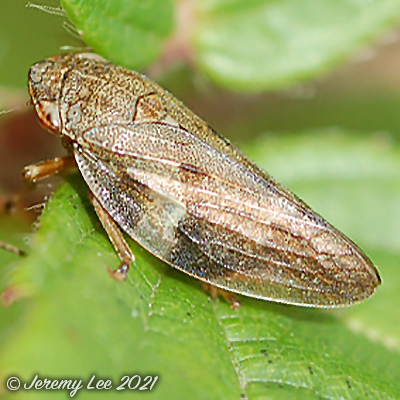
 |
|
Scientific Classifications explained » Amphibians » Ants » Aphids » Bees » Beetles » Birds » Bugs » Butterflies » Caterpillars » Damselflies » Dragonflies » Earwigs » Flies » Frog/Leafhoppers » Fungi » Galls » Grasshoppers » Harvestmen » Hoverflies » Lacewings » Ladybirds » Leaf Mines » Lichens » Mammals » Millipedes » Mosses » Moths » Sawflies » Slugs » Snails » Spiders » Trees & Shrubs » Wasps » Wild Flowers » Woodlice » Postboxes |
UK Nature > Frog/Leafhoppers > Philaenus spumarius

Scientific Name: Philaenus spumarius Common Name: Common Froghopper Philaenus spumarius, more commonly known as the Common Froghopper, is a spectacularly variable species, measuring 5-7 mm, with many dramatically different colour forms. Usually they are yellowish, brownish or black, with brighter patches on a dark background, but also with dark markings on a lighter background. An extremely common species in a wide range of plants across the UK, the larvae are the familiar producers of 'cuckoo-spit' in gardens. Their larvae in the foam nests are largely protected from predators and also get the necessary moisture for the development and temperature, so their mortality remains low even in bad weather. The larval stage lasts about 50 days and the adults leave the foam nest only when it is completely dried, which normally takes about ten days. The females mate soon after, and adults can be seen everywhere from June to September. |
|

https://www.uknature.co.uk is a website dedicated to showing the immense diversity of UK nature and wildlife. Our vast range of habitats, from lowland arable to snow covered mountains, from storm-ravaged coastlines to peaceful inland freshwater lakes and rivers, from dry, sandy heaths to deciduous and coniferous forests, all these habitats contribute to the abundance of UK nature. We have wild birds in huge numbers either residing or visiting our shores (597 recorded species as at July 2013) and we must also not forget the humble back garden with its grass lawns, flower beds filled with nectar rich flowers, shrubs and trees, all designed to attract huge numbers of insects such as bees, moths, butterflies and hoverflies; and finally the small ponds which provide safe havens for frogs, toads, newts and even slow worms and grass snakes. www.uknature.co.uk is the showcase for my personal passion, photographing uknature in all its glory. I sincerely hope you all enjoy the fruits of my labours. This site and all images contained therein is © Jeremy Lee 2004 - 2025. All Rights Reserved. Site design by Jeremy Lee. Site development & IT Support by Stuart Lee. |